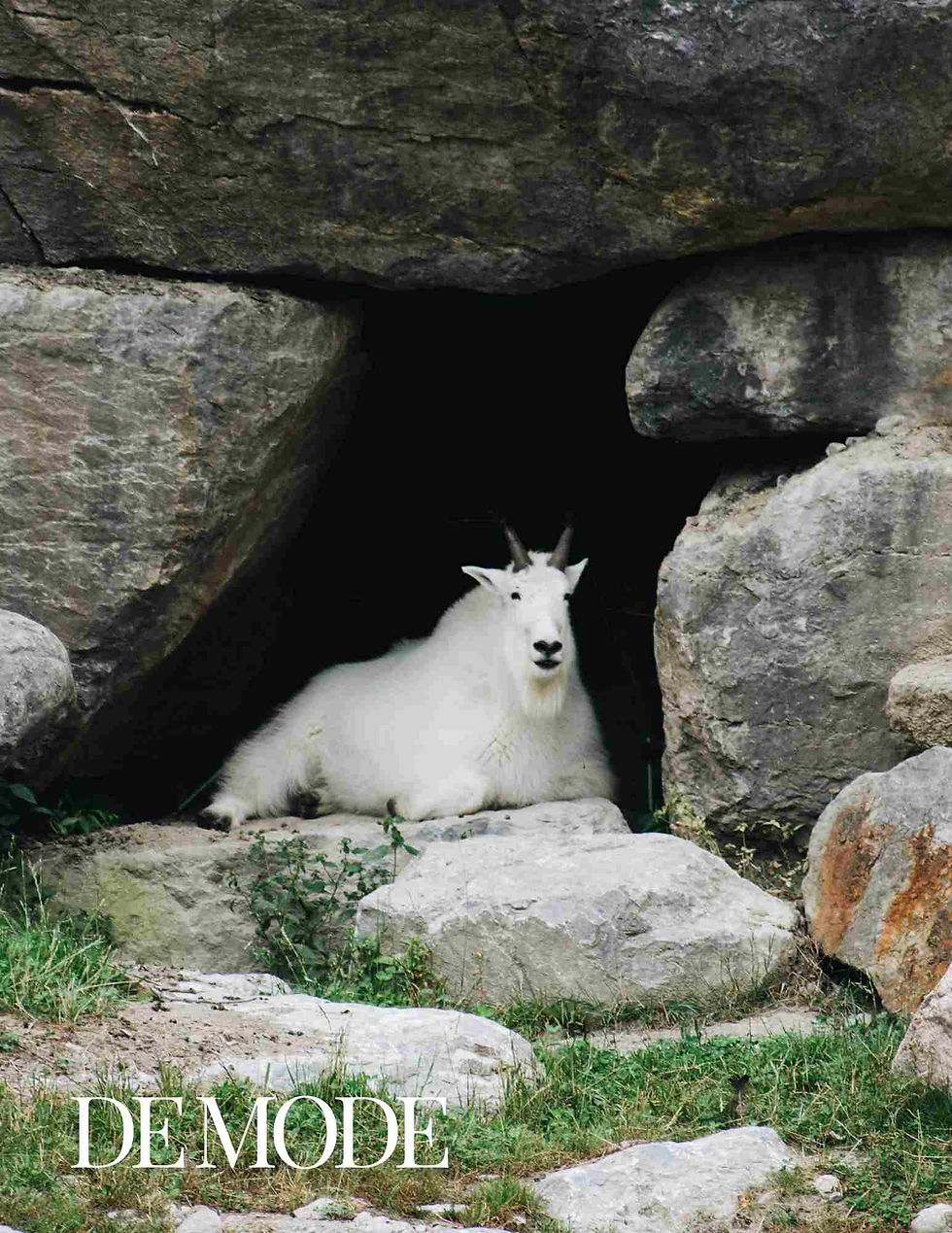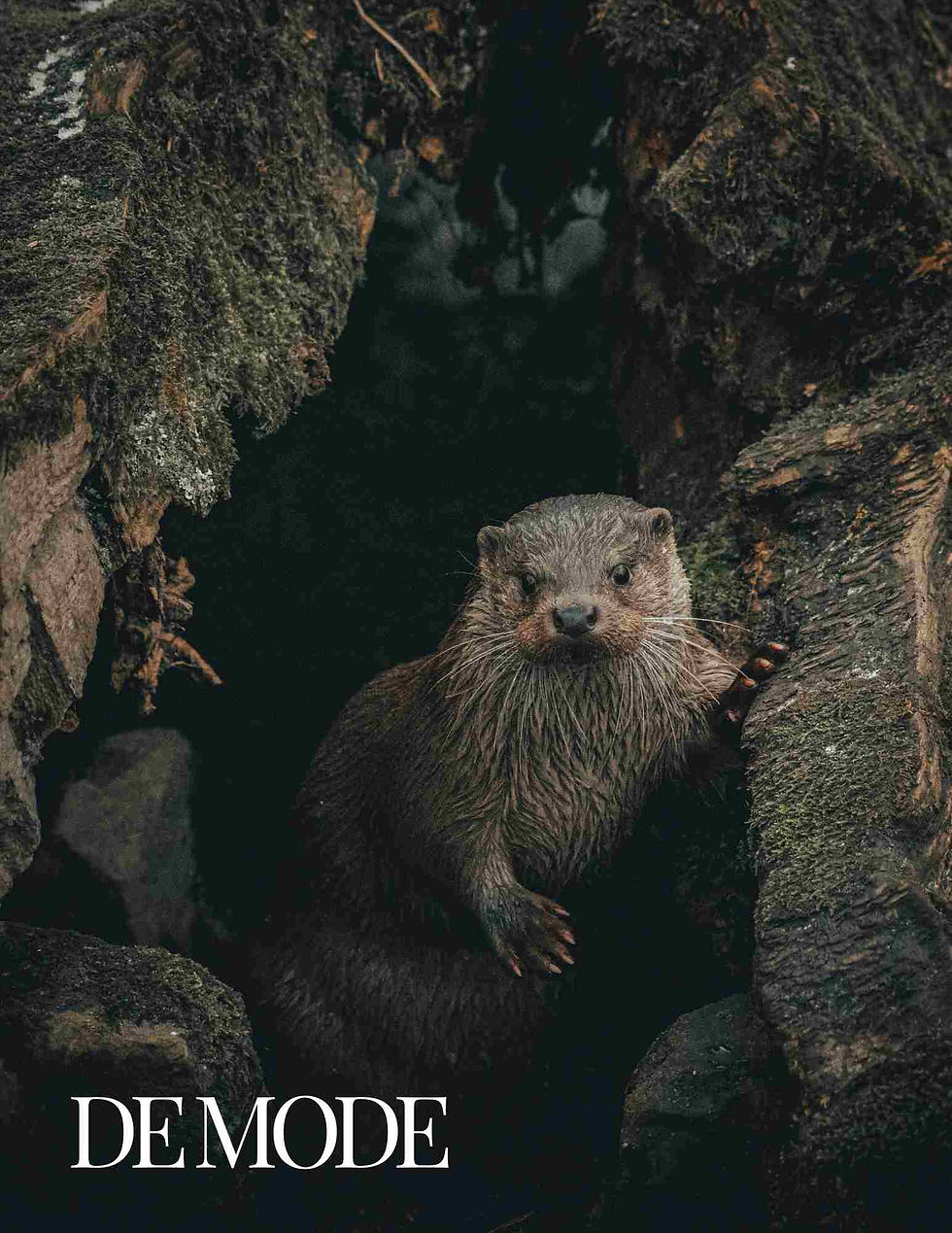"LIFE IN THE CAVES - ADAPTING TO DARKNESS IN SUBTERRANEAN ENVIRONMENTS": DE MODE GLOBAL
- DE MODE

- May 26, 2024
- 4 min read
ORIGINALLY PUBLISHED IN DE MODE | ANIMAL & NATURE
Article Published on: 26TH MAY 2024 | www.demodemagazine.com
Life in caves, or subterranean environments, presents unique challenges and opportunities for the organisms that inhabit them. These dark, often isolated ecosystems host a variety of specialized species that have adapted to the harsh and unchanging conditions. This essay explores the adaptations of cave-dwelling organisms, the ecological dynamics of these environments, and the evolutionary significance of life in the dark.

Adaptations to Darkness
One of the most striking features of cave life is the absence of light, which has profound implications for the organisms that inhabit these spaces. The lack of light means that photosynthesis cannot occur, leading to a reliance on other forms of energy and unique adaptations to navigate, find food, and reproduce in the dark.
Loss of Pigmentation and Eyesight: Many cave-dwelling species, such as fish, salamanders, and insects, exhibit a loss of pigmentation and reduced or absent eyesight. The absence of light renders vision useless, so energy and resources are redirected towards other senses. For example, the Mexican blind cavefish (Astyanax mexicanus) has evolved to lose its eyes entirely, relying instead on enhanced non-visual senses like touch and taste to navigate and find food.
Enhanced Sensory Perception: In the absence of light, cave organisms often develop heightened other senses. For instance, many cave-dwelling animals have developed acute mechanoreception and chemoreception. Bats, which roost in caves, use echolocation to navigate and hunt insects in complete darkness. Similarly, cave beetles and other invertebrates have sensitive antennae or elongated limbs to detect their surroundings through touch and chemical signals.
Energy Conservation: The scarcity of food in caves has led to adaptations for energy conservation. Many cave-dwelling species have slower metabolisms and longer lifespans compared to their surface counterparts. For example, the olm (Proteus anguinus), a cave-dwelling salamander found in European caves, can live for over a hundred years and survive for long periods without food.
Ecological Dynamics
Caves are isolated environments with limited resources, leading to unique ecological interactions and dynamics. The primary sources of energy in these ecosystems come from outside the cave, such as organic matter washed in by water, or from chemoautotrophic bacteria that can derive energy from inorganic chemical reactions.
Food Webs: Cave ecosystems often have simplified food webs compared to surface environments. Detritus, such as bat guano or decaying plant material, serves as the primary energy source for many cave organisms. These materials are broken down by fungi and bacteria, which are then consumed by detritivores like insects and crustaceans. Predators, such as cave spiders and salamanders, feed on these primary consumers, creating a simple but stable food web.
Symbiotic Relationships: Symbiosis plays a crucial role in cave ecosystems. Chemoautotrophic bacteria, for instance, form symbiotic relationships with cave-dwelling invertebrates, providing them with essential nutrients. This type of mutualism is vital in environments where traditional food sources are scarce.
Evolutionary Significance
The study of cave-dwelling organisms provides valuable insights into evolutionary processes and adaptation. The extreme conditions of caves act as natural laboratories for studying how species evolve and adapt to challenging environments.
Convergent Evolution: Cave environments often lead to convergent evolution, where unrelated species develop similar traits in response to similar selective pressures. The loss of eyesight and pigmentation in cave-dwelling fish, insects, and amphibians from different parts of the world is a prime example of convergent evolution. These similarities arise because the dark, nutrient-poor conditions of caves consistently select for traits that improve survival under such conditions.
Speciation and Isolation: Caves can act as isolated environments, leading to speciation. Geographic isolation within cave systems prevents gene flow between populations, allowing them to diverge genetically over time. This process can result in the formation of new species uniquely adapted to their specific cave environments. The diversity of cave beetles in the Appalachian Mountains of the United States, for instance, illustrates how geographic isolation and adaptation to specific microhabitats can drive speciation.

Human Impact and Conservation
Despite their isolation, cave ecosystems are not immune to human impact. Pollution, habitat destruction, and climate change pose significant threats to these delicate environments.
Pollution: Contaminants from agricultural runoff, mining, and waste disposal can seep into caves, disrupting the fragile ecological balance. Pollutants can affect the water quality, impacting the organisms that rely on clean water for survival.
Habitat Destruction: Human activities such as quarrying, road construction, and tourism can destroy cave habitats or alter their structure, making them uninhabitable for cave-dwelling species. The delicate formations and microclimates of caves are easily disturbed by external influences.
Climate Change: Changes in temperature and precipitation patterns due to climate change can affect cave ecosystems. Altered rainfall patterns can impact the amount of organic matter entering caves, while temperature changes can disrupt the metabolic rates and reproductive cycles of cave organisms.
Conservation Efforts
Conservation efforts for cave ecosystems focus on protecting the unique biodiversity and maintaining the ecological integrity of these environments. This involves a combination of legal protection, scientific research, and public education.
Legal Protection: Many caves and their ecosystems are protected by national and international laws. These protections help to restrict harmful activities such as mining, pollution, and unregulated tourism.
Scientific Research: Ongoing research is crucial for understanding the biodiversity and ecological dynamics of cave ecosystems. Scientists study the adaptations, behavior, and genetics of cave-dwelling species to inform conservation strategies and identify critical habitats that require protection.
Public Education: Raising awareness about the importance of cave ecosystems and the threats they face is vital for their conservation. Educational programs and ecotourism initiatives can help to foster a sense of stewardship and encourage sustainable practices among local communities and visitors.

Conclusion
Life in caves represents one of the most fascinating examples of adaptation to extreme environments. The unique challenges of darkness and isolation have driven the evolution of specialized traits and behaviors in cave-dwelling organisms. These adaptations, in turn, provide valuable insights into the processes of evolution and the resilience of life. However, the fragility of cave ecosystems highlights the need for concerted conservation efforts to protect these hidden worlds and their remarkable inhabitants. Through a combination of legal protection, scientific research, and public education, we can ensure that the unique biodiversity of subterranean environments is preserved for future generations to study and appreciate.



Comments